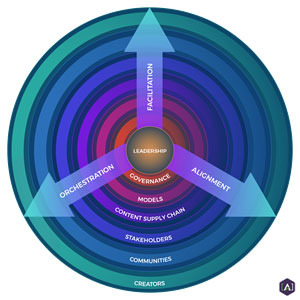The costs of producing content ad-hoc and not following a defined structure prescribed by a Core Content Model mount silently. These costs cripple organizations that don’t wake up to the intelligent way of re-imagining and re-contextualizing our approach to producing and managing content.
Real-world client examples: the Cost of Neglecting Content Operations
Examples [A] has seen throughout the years of helping clients escape the costly and painful historic approaches include:
 Health Services Company was spending 1 day a week just manually tracing down content. No automation, just manual copy/pasting consumed 20% of the team’s time.
Health Services Company was spending 1 day a week just manually tracing down content. No automation, just manual copy/pasting consumed 20% of the team’s time.
 Global Pharmacy Company generated 80% of their content in separate formats at Agencies of Record (AORs). More than 50% of the content, and all source documents, are neither findable nor accessible. Before assistance from [A], this client was unable to even quantify how much is inaccessible, out of date, or at regulatory risk.
Global Pharmacy Company generated 80% of their content in separate formats at Agencies of Record (AORs). More than 50% of the content, and all source documents, are neither findable nor accessible. Before assistance from [A], this client was unable to even quantify how much is inaccessible, out of date, or at regulatory risk.
 Global Financial Technology & Leading Global Medical Publishing spent 50-60% of authoring time spent on transformation rather than authoring and content creation. Authors were spending the majority of their time just moving content from system to system or format to format. These are efforts that can and should be automated.
Global Financial Technology & Leading Global Medical Publishing spent 50-60% of authoring time spent on transformation rather than authoring and content creation. Authors were spending the majority of their time just moving content from system to system or format to format. These are efforts that can and should be automated.
As the Content Intelligence Service, [A] has experience ensuring success in the area of Content Operations with clients of all shapes and sizes.
Benefits of Content Operations
The policy an organization maintains around content and data is a critical business function. Automating and enhancing 20-60% of subject matter expert’s time and attention, fosters better quality of work while also allowing for the insertion of key content transformation systems.
Governance and policy can also be integrated into the content creation process and content flow. In our online article “Digital Policy: Impacting Time, Costs, Innovation, and Content Velocity,” policy maven Kristina Podnar maintains that:
… policies can be “baked in” within workflows and tools. This enables content producers to use simple guidelines, and create what is essentially “pre-vetted” content, which massively decreases time and budget for the approval processes.
This is where the operational innovation steps in:
“Operational innovation means coming up with entirely new ways of filling orders, developing products, providing customer service, or doing any other activity that an enterprise performs… Operational innovation is truly deep change, affecting the very essence of a company: how its work is done. The effects ripple outward to all aspects of the enterprise.” -- --Michael Hammer, Harvard Business Review

By evolving our systems and procedures, we create an injection point for semantic processes that result in indexable, and modularly accessible content.
Content Operations does this through the orchestration of shared patterns (the Core Content Model, the Core Semantic Model) across authoring tools, systems and processes — ensuring content can work as one whole born out of many parts across the organization.
Further Resources
To learn more about the content orchestration model and the Content Services Organization, download the whitepaper from simplea.com or check out the new YouTube series from [A], “The Invisible World of Content” where we explore all of the topics touched in this article.
Also watch 7 Ways to Avoid the Biggest Failures in Content Operations where Kit and Cruce share best practices of Content Operations and how to avoid some of the biggest mistakes that organizations make.
Contact Us for a Free Consultation.